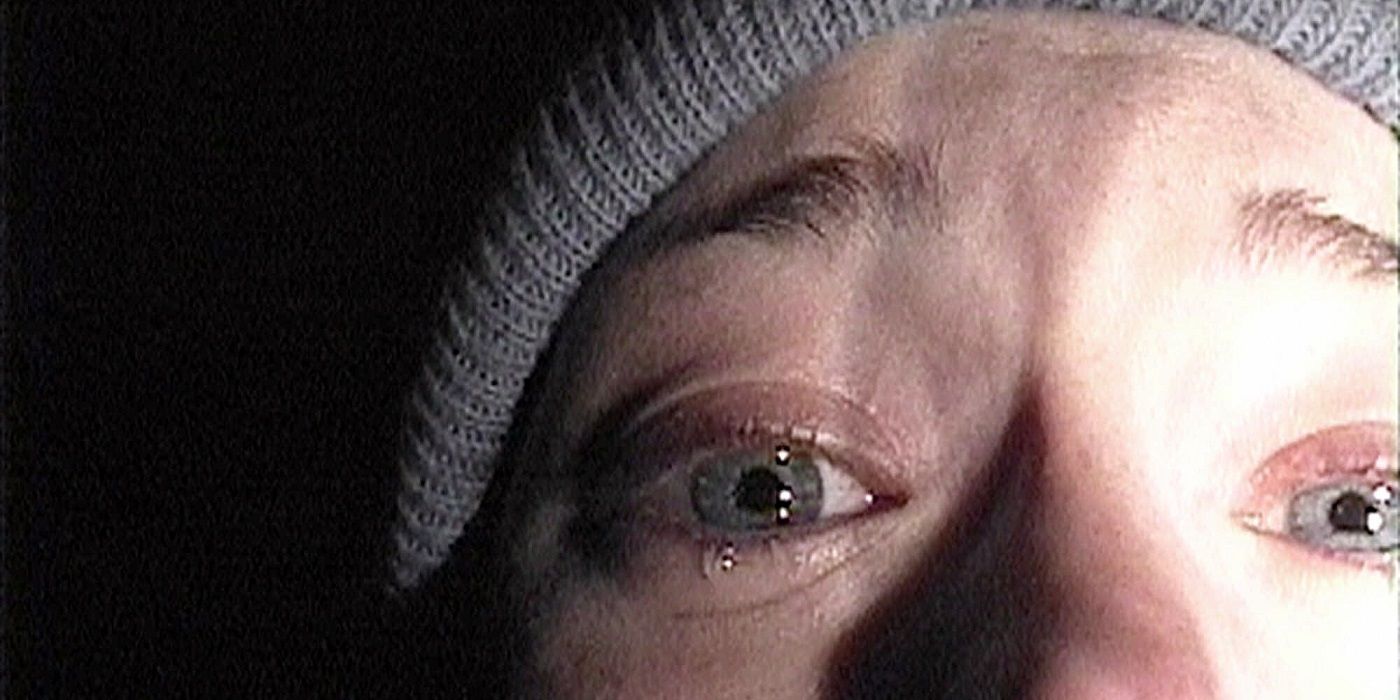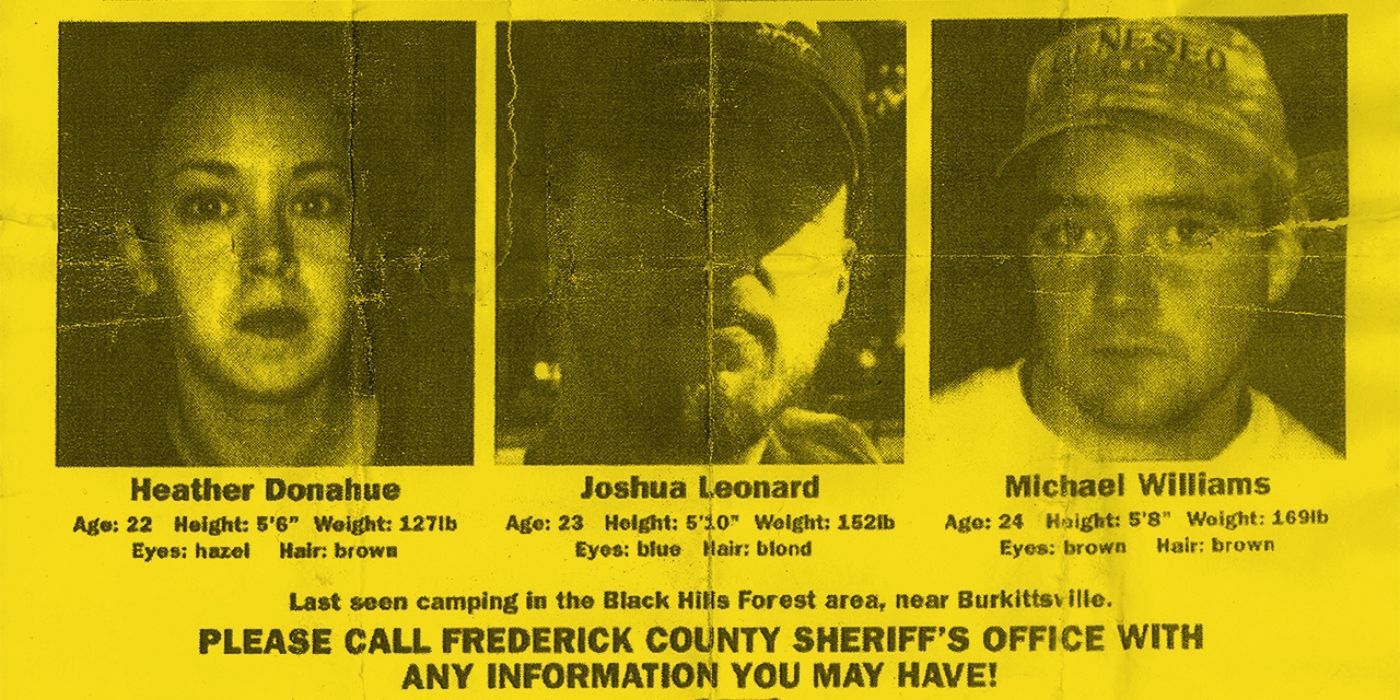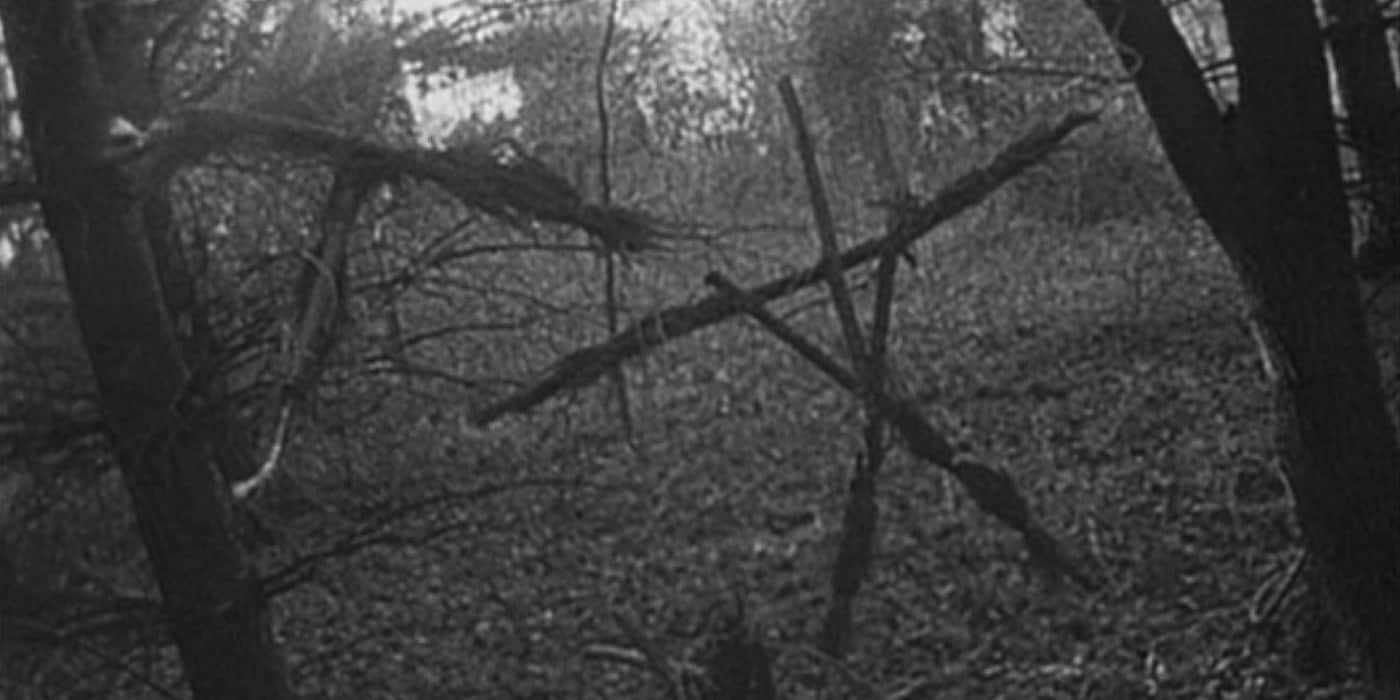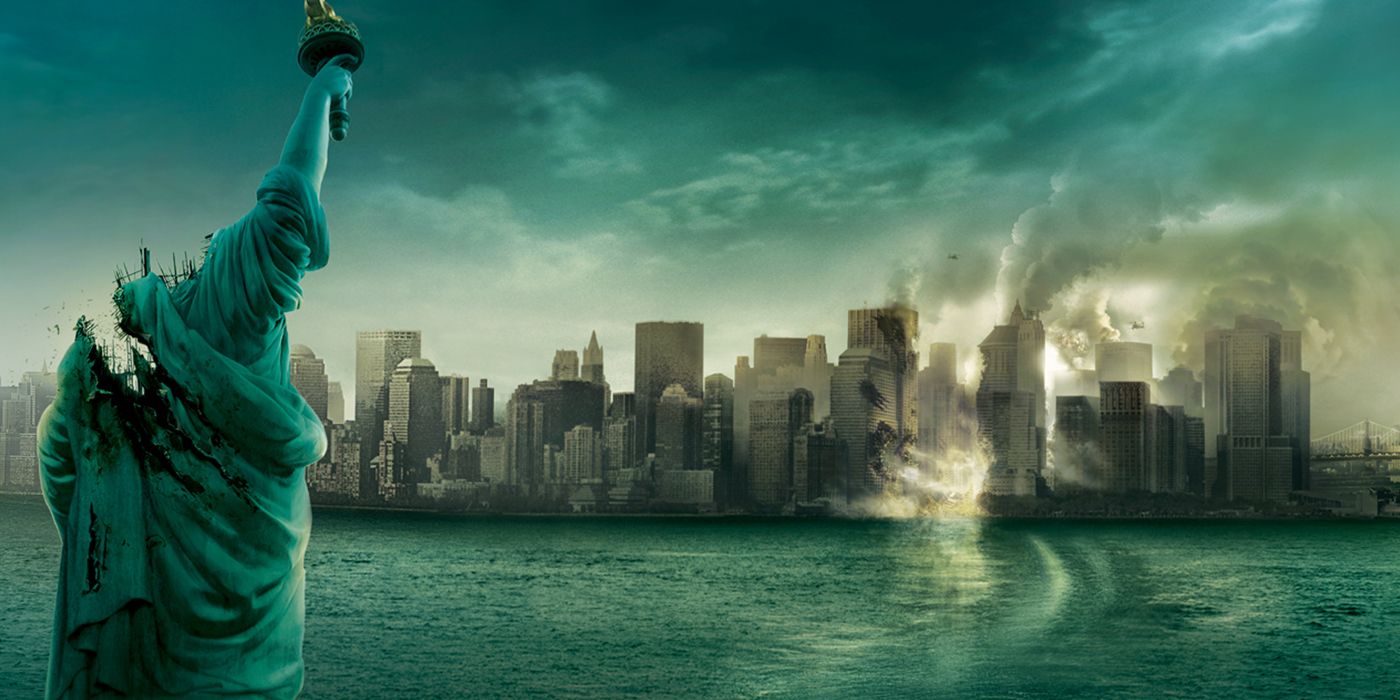One subgenre of horror that is often either widely loved or widely hated, is found footage. Though it's a technique that dates back to the 1960s, 1999's classic horror film The Blair Witch Project is often thought of as truly popularizing it. Part of why that film is thought of as such a classic, so iconic, and one of the most recognizable films of all time, is its groundbreaking and successful marketing campaign. Not only did it do something entirely different, but it really did set a precedent that many other successful films have since followed.
To understand how its marketing campaign actually worked, it's kind of important to understand the actual film and how it was made. The Blair Witch Project follows three film students named Mike, Heather, and Josh. They set out to Burkittsville, Maryland to do an investigative documentary about an old legend called the Blair Witch. After interviewing locals, they head off on a hike through the woods to a space where a mysterious death, rumored to be caused by the witch, occurred. The day after their first night in the woods is when the spooky stuff starts to happen. They get lost and seemingly stuck in a loop in the woods, there's slime all over their stuff, they hear weird sounds, all of the things one could expect from a paranormal haunting. And of course, it all comes to a head in an explosive ending.
The entire film is found footage and structured like a documentary, as if they've just found raw footage. And this is achieved very, very well. The acting is good and the production quality is so low, in a good way, that it feels super raw and believable. The slow pacing and subtle spookiness also aid in this. The film also probably looks raw and real because, to an extent, it was. All of the dialogue was improvised, and conditions were not good so the actors were pretty grumpy. The tension and arguments shown in the film, were sometimes real because the actors were genuinely frustrated with each other. The film also infamously didn't change the names of the actors from their real names, so they were essentially playing themselves.
In 1998 when the official website for the film was launched, was when it started to make waves. It featured fake police reports and news clips of interviews with people about a group of missing students. When people saw this combined with footage from the film, it started some real debates as to whether it was actually a documentary. The filmmakers kind of ran with this. When the film premiered at Sundance, they actually handed out flyers to the public asking for people to contact police about the "missing" actors. They were also listed as missing and deceased online, and the actors' real parents reportedly got calls of condolences. The website ended up massing over 160 million hits by the end of 1999, a time when virality was way less common than it is now.
Just a few weeks before the film was released widely, they put out a mockumentary on Syfy called Curse of the Blair Witch. It describes many fictionalized events of people getting killed and going missing, dating back to the 1800s. It also provides a real human name to the legend of Blair Witch and says that it's thought to be a ghost named Elly Kedward who was tried and executed for witchcraft in 1785. This is all presented very straightforward, with fabricated news articles and interviews, and only further perpetuated the myth that The Blair Witch Project was real.
The impact of this campaign was immense. Firstly, it was super successful for the film. As of 2021, The Blair Witch Project is one of the most successful indie films of all time and it's the 37th most profitable horror film of all time. The biggest impact of this film is probably found in its impact on not only horror but film in general. While it did popularize the found footage genre, Paranormal Activity probably deserves more credit for the boom of late 2000s found footage films that came out. Its unique and groundbreaking marketing campaign, though, has left its mark.
In 2002 another iconic horror film, The Ring, which is groundbreaking in its own rights, used a similar technique. That film was about a cursed videotape. It also created multiple websites where the cursed video in the film would just play, out of context, and it also played on late-night TV commercial breaks. They even went so far as to distribute it randomly on VHS tapes left on people's cars outside of movie theatres. This is also still talked about and proved to be very successful for the film. Another huge viral marketing campaign similar to The Blair Witch Project but came out nearly 10 years later, was 2008's Cloverfield.
Cloverfield is a monster movie, and the first in a trilogy. It is found footage, like The Blair Witch Project, but of course, the subject matter is very different. Cloverfield was marketed in a huge viral marketing campaign that included multiple websites, MySpace pages for all the characters, games, out-of-context teaser trailers, and even fictional companies. It was like a puzzle. And it ended up being very successful, making for the biggest January release of all time until the release of Ride Along in 2014.
Viral marketing has been attempted multiple times since The Blair Witch Project, to some success in films like The Ring and Cloverfield and some weren't so successful, like Snakes on a Plane. It's unlikely that the same magic that was created with The Blair Witch Project will ever happen again.
The Blair Witch franchise itself is even in on the joke. The first sequel, Blair Witch 2: Book of Shadows, is about a group of people who go on a Blair Witch tour because they believe the movie is real. It's not a good movie, but the meta idea is pretty cool and has a good amount of cheekiness. It went viral before going viral was even a thing, and how the Internet is now so developed that pulling the wool over people's eyes is a lot harder. It's a film that went viral before going viral was even a thing, and it changed the way things were marketed forever.




